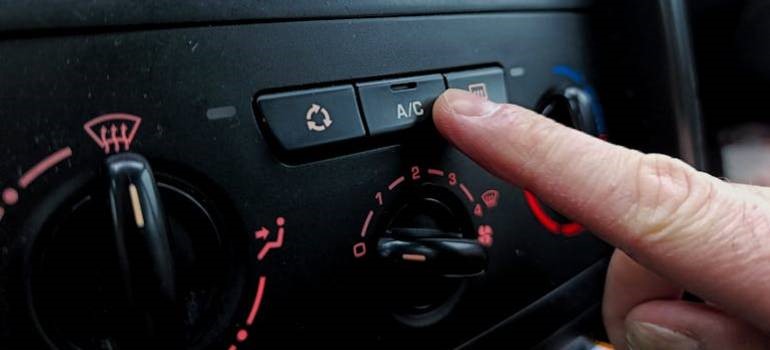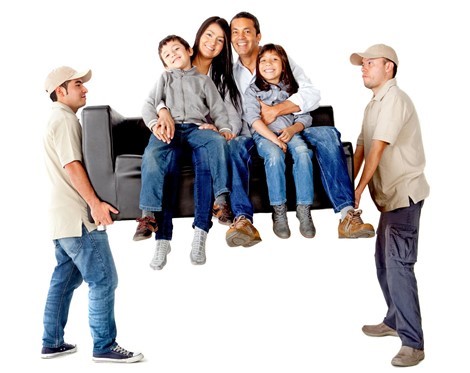Most household moves happen during summer, which brings high heat and long days. In the Bay Area, temperatures can vary, but many cities experience intense inland heat. You may be lifting boxes, packing trucks, and making trips back and forth. All of this can wear you down quickly. While some prefer to handle everything alone, others rely on Bay Area movers for help. Either way, moving in the heat takes planning. You’ll need to stay alert, protect yourself from sun exposure, and avoid overheating. Staying cool during a warm weather Bay Area move means choosing the right time of day, wearing proper clothing, and taking regular breaks. It also helps to stay hydrated, manage airflow indoors, and pace your efforts. Whether you’re relocating across town or heading out of the region, small adjustments make a big difference.
Make sure to wear comfortable, protective clothing
In the summertime, it’s important not to get overheated and the best way to do that is through lightweight, comfortable clothing. Some key things to look for in your clothing are:
- Breathable cotton cloth
- Wicking sports apparel
- Closed-toe athletic shoes
- Hats and baseball caps

You should also pick out a pair of sturdy work gloves to protect your hands. While most of your belongings will be packed up, there are still sharp corners, and you may come across other things that can dig into the palms or even cut the skin.
Use protective gear
In the Bay Area, professional moving supplies and safety gear can help prevent heat-related and physical injuries during your move.
- Cooling towels are another great tool. Soak one in cold water and wrap it around your neck to stay cooler. These towels can help lower your body temperature quickly.
- Portable fans, handheld misting bottles, or ice packs are also useful. You can wear or carry them for quick relief.
- Some people like cooling headbands or wristbands, which are affordable and easy to wear.
- You can also try cooling gadgets like neck fans or wearable ice vests to cool faster.
- Safety glasses might help if you're moving dusty items or working in the garage.
- Knee pads can be helpful if you're kneeling often to pack or lift. These small additions keep your body cooler and protected. In high heat, they reduce discomfort and make long days easier to get through.
For extra support with gear and climate planning, ask about available storage units in Bay Area before moving day.

Stay hydrated from start to finish of the warm weather Bay Area move means
Water is your most important tool during a hot weather relocation, especially in case of a more complicated relocation such as a Bay Area long distance move. Pick up a package of bottled water to have on hand for when you need to rehydrate and cool off. It can be a good idea to have both room temperature and cold water ready to drink. Have enough for yourself and anyone helping you, including movers. Offer drinks often, especially when sweat levels increase. Set reminders to sip water every 20 minutes. Even if you’re not thirsty, keep drinking.
Include electrolytes and salty snacks
Water is essential, but you also need electrolytes to replace what you sweat out. Keep sports drinks, coconut water, or electrolyte tablets on hand. Choose drinks with a balance of sodium and potassium. These help your muscles work well during heavy lifting. Salty snacks like trail mix, pretzels, or granola bars can also restore balance. Keep small portions in a bag or cooler.
Avoid sugary sodas or energy drinks—they can cause energy crashes. Dehydration and low electrolytes cause dizziness, muscle cramps, and confusion. Eating small salty snacks with fluids keeps you going strong. Electrolytes support your energy and reduce heat-related issues. If you feel light-headed, stop immediately and drink an electrolyte-rich beverage.
Hydration matters more in hotter inland cities
Not all Bay Area cities experience the same temperatures. Inland areas like Concord, Livermore, or Walnut Creek can get very hot—often reaching the 90s. In those places, dehydration is a bigger risk. That’s why hydration planning matters even more if your move takes place inland. Even a short walk outside can make you sweat heavily. If you’re moving to or from an inland area make sure to:
- Double your water supply.
- Check the local forecast before moving day.
- Schedule breaks when temps peak and avoid direct sun exposure.
- Keep electrolyte drinks nearby.

These small steps matter more in the East Bay or South Bay, where heat can build fast. Cooling off may take longer, and dehydration happens more quickly. Extra care during inland moves keeps you safer. Adjust your routine based on your city’s expected temperature and sun exposure.
Plan around the heat of the day
Time of day affects how well you manage your move in summer.
- Morning hours are cooler and more manageable. Start as early as 6 a.m. if possible. Most movers also prefer morning starts. The temperature rises fast by late morning.
- If you can’t begin early, wait until after 5 p.m. to resume work.
- Midday is the hottest, especially between 12–4 p.m. That’s the time to rest indoors, hydrate, or organize small tasks.
- If your move involves multiple days, schedule packing or heavy lifting for early or late hours. Use that midday break to clean, label boxes, or plan logistics.
Early movement avoids direct sun and prevents burnout. This schedule also reduces physical strain. You’ll sweat less and think more clearly. Moving when the sun is lowest protects your body and helps you finish strong. Planning the best time to move in the Bay Area, gives you a better moving experience and keeps temperatures manageable.
Keep indoor temps manageable
Keeping your house cooler during a move can be challenging, especially with open doors.
- Start by opening windows early in the morning. This brings in cool air before the day heats up. Close them once the outside temperature rises.
- Use fans to move air through the home. Place them near entryways or windows to direct airflow. Create a cross-breeze if possible. This setup helps you avoid stale, hot air while working inside.
- Keep interior doors open to let air flow freely. Place a box fan facing out in one window to pull warm air out.
- If you have air conditioning, run it during early hours, but turn it off when doors stay open. Cooling one or two rooms can create break zones.
You can take quick rests there when needed. These adjustments make the space more tolerable during heat. Smart airflow helps you stay cool even with physical movement inside the home. For added support and care, our BBB A+ rated residential movers offer safe relocation options tailored to all home sizes.
Block sunlight inside the home
Sunlight heats rooms quickly, especially during peak hours. Keep blinds, curtains, or shades closed in sunny rooms. Use blackout curtains if you have them. They block both light and heat. If you don’t have curtains, use large towels or sheets. Even temporary window covers help reduce indoor temperatures.
South-facing windows tend to get the most sun. Focus on those areas first. Reflective shades or car windshield covers can also work in a pinch. This quick fix lowers the room’s heat. You can also apply aluminum foil to windows with tape to block sunlight. While not pretty, it helps keep temperatures lower.

Blocking sunlight protects your energy and comfort throughout the day. It also keeps items like electronics, candles, and food cooler. This simple task makes a big difference in managing indoor temperatures. Plan for sunlight control before the move begins to keep the space livable.
Send the kids and pets to stay with someone for the day
If you are going to have your doors open all day, it will be hard to keep the house cool. Children and pets are a little more vulnerable to extreme temperatures than adults. Plus, the kids can get bored easily and may start getting in your way or the way of your movers. Consider arranging to have them stay at a neighbor’s, a friend’s, or a family member’s home during moving day.
Know your neighborhood cooling options
Bay Area summers often depend on where you are. Cities like San Francisco and Daly City tend to stay cooler, while inland areas such as San Jose, Concord, Antioch, and Dublin can hit the mid-90s or higher. If you're moving in these hotter zones, prepare by knowing where to cool off nearby.
- Many counties, including Alameda and Santa Clara, operate designated cooling centers during extreme heat.
- During a San Jose relocation, keep in mind that Dr. Martin Luther King Jr. Library and various community centers open their doors as public cooling spaces when temperatures rise.
- Alameda County also maintains a list of air-conditioned cooling centers, including libraries in cities like Fremont and Newark, which activate when the temperature exceeds 91°F.
- Shopping centers such as Westfield Valley Fair, Sunvalley Shopping Center, and Stoneridge Mall offer reliable indoor relief with air conditioning.
Save these locations on your phone ahead of time. Use hyperlocal weather apps to monitor heat alerts and microclimate changes. Also, know where the nearest Safeway, 7-Eleven, or gas station is in case you need cold water or ice. Consider working with local Bay Area movers who know the area well and can be of help if you're new here. If someone begins to show signs of heat exhaustion, stop right away and move to a cool location. Keep emergency numbers handy. Planning your cooling stops before the move helps prevent overheating and keeps the day on track.
Prepare vehicles and movers for the heat
Before your move, take your car in for a check-up. Make sure the air conditioner works well. A mechanic can recharge the system or fix coolant issues. Hot cars are dangerous, especially during long drives. Plan ahead if you're driving from a cooler coastal town to a hotter inland area. Bring a small cooler with water and cold snacks.

Don’t store electronics, candles, or plants in a hot car. They can melt or wilt quickly. Use sunshades on your windows if parked in direct sunlight. Cover black seats or steering wheels with towels to avoid burns. Cars heat up fast in the sun. Check your engine coolant and battery as well. These small steps help avoid breakdowns during a busy day. Keeping your vehicle cool helps protect you and your items. No one wants to overheat while stuck in traffic or driving to a new home under the sun.
Take regular breaks during the move
Don’t push through the heat without stopping.
- Take short breaks every hour, even if you feel fine.
- Move into the shade or a cooled room.
- Use a fan, sip water, and rest your legs.
- If you're feeling light-headed or sweaty, stop right away. Rest for at least 10 minutes in a cool space.
- Apply wet towels to your neck and wrists for quick relief.
If you hired movers, give them time to rest as well. Heat can wear down your body fast, especially during physical labor. Watch for signs like dizziness, nausea, or confusion. These are early signs of heat exhaustion. Take breaks before you reach that point. Building breaks into your moving plan helps prevent accidents and keeps energy levels stable. It’s the safest way to get through a warm weather move.
Implement the tips for staying cool during a warm weather Bay Area move
Bay Area summers bring sunshine, rising temperatures, and microclimates that change fast. Inland cities like Concord and Antioch often reach the 90s, while coastal areas stay cooler. Planning your move around the weather helps you stay productive and safe. Start early, dress for the heat, and stay hydrated throughout the day. Use shaded areas and indoor cool zones to take breaks. Keep water, snacks, and cooling gear within reach at all times. When needed, visit local libraries or malls with air conditioning to cool off. Whether you're relocating across San Jose or heading out of Fremont, the right approach helps avoid heat stress. Staying cool during a warm weather Bay Area move means preparing wisely and pacing your day. For those who want extra help, professional movers can handle the heavy lifting. With a reliable team, you stay focused on safety and arrive feeling ready to settle in.
Tags
Subscribe to Upline Moving's Blog










